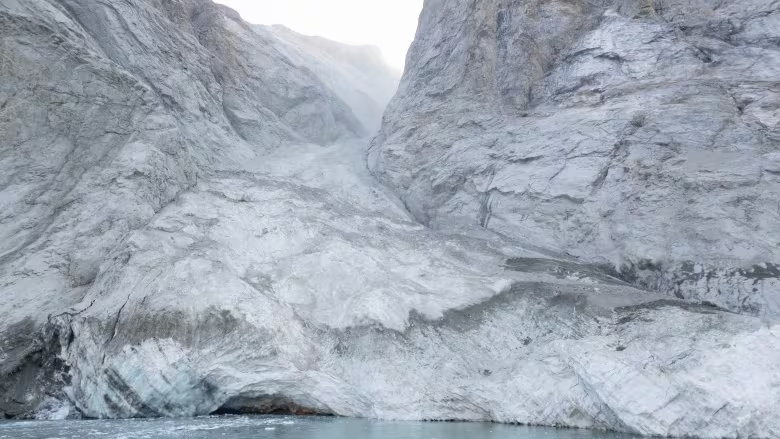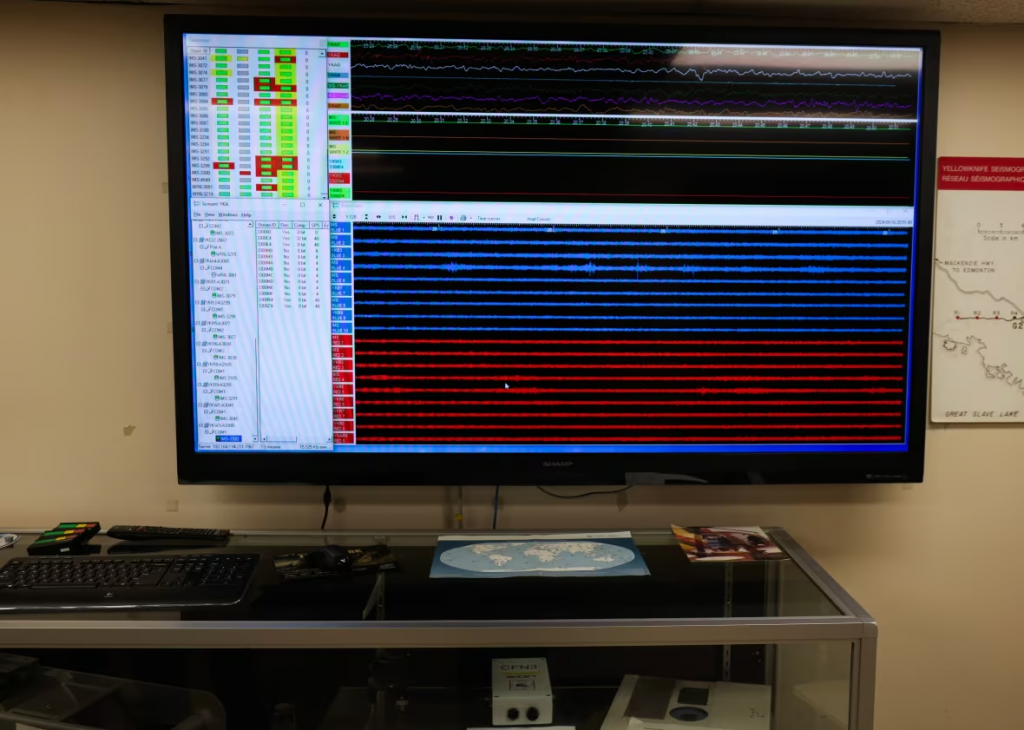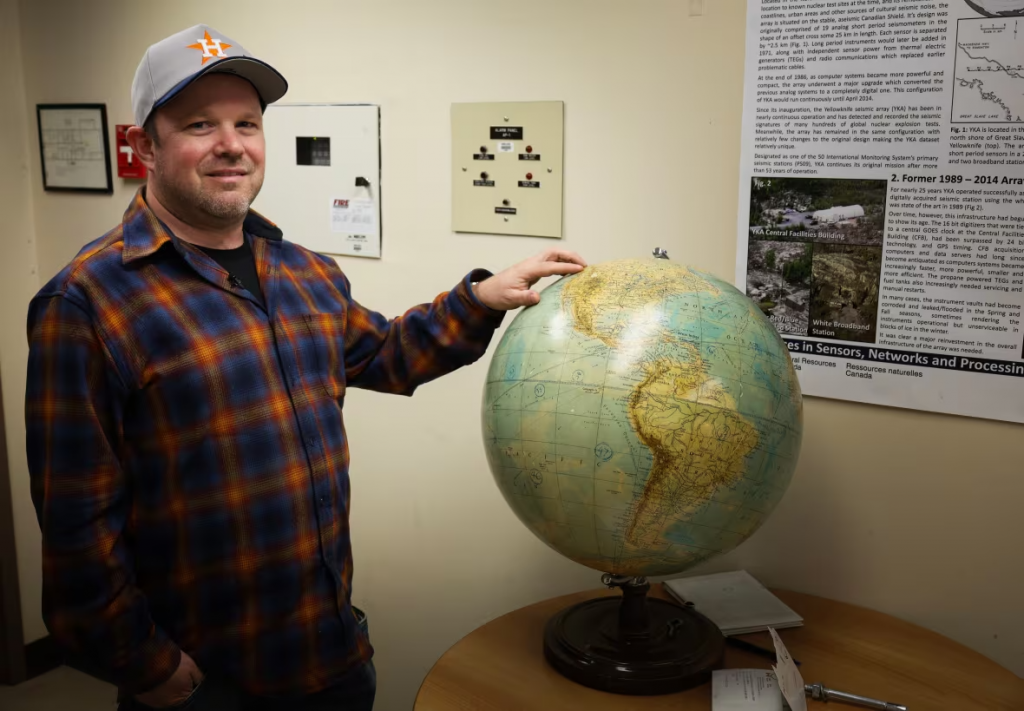Canada News
New study explains why tsunami signals last year in Greenland lasted for days

A photo taken after a rockslide in Greenland last year that caused a tsunami. The wave, which scientists measured up to 200 metres high, sloshed back and forth in a deep-water fjord in a phenomenon known as a seiche. (Danish Army)
Facilities around the world, including in Yellowknife, picked up mysterious seismic readings
New research explains what exactly happened a year ago, when large seismic waves from Greenland caused the earth to tremble for nine days and the movement was detected at monitoring stations worldwide — including in Yellowknife.
In a paper published last week in Science magazine, researchers describe how a tsunami became trapped inside Dickson Fjord, Greenland, in September 2023 after a mountaintop collapsed. The resulting wave, which scientists measured up to 200 metres high, sloshed back and forth in the deep-water fjord in a phenomenon known as a seiche.
Lead researcher for the paper, Dr. Kristian Svennevig from the Geological Survey of Denmark and Greenland (GEUS), says the occurrence was extremely unusual.
“I noted it down as a USO — unidentified seismic object — so, something that has never been seen before,” she said.
The research work was happening alongside an expedition by the Danish army that went into the area three days after the first seismic signals came in. Svennevig says the results of that mission were confusing at first, given no gigantic waves were seen.
The tsunami wave got much smaller as the days went on but seismic signals continued to be picked up around the globe. Svennevig said this was due to the area being two-and-a-half kilometres wide and 500 metres deep.
“If you move that much water ten centimetres, that’s enough to get a very powerful seismic signal,” said Svennevig.
The researchers say the event highlights some of the effects of climate change and the risk of large landslides in polar regions.
‘Quite spectacular,’ says seismologist
One of the monitoring stations picking up those seismic signals was the Yellowknife Seismological Array (YKA). The YKA, along with other stations in the North, transmits its reading to Ottawa.
Allison Bent, a seismologist with Natural Resources Canada, said she still remembers the widespread response from when the event happened a year ago.

The readings from the facility are transmitted to Ottawa for analysis. The YKA detected the Greenland tsunami last year. (Jocelyn Shepel/CBC)
“Somebody I know in Belgium sent an email out to a huge number of people saying, ‘We see this really weird signal. It looks like it’s coming from Greenland. Does anybody know what it is?’ So I got curious,” recalled Bent.
She said she then looked at the data which was “quite spectacular.”
Bent said initially, no one she spoke to knew what it was. It wasn’t until a few months later at a conference that she heard of the discovery finally being figured out.
After looking into the study she brought up that researchers like Svennevig are taking note of the role climate change plays in landslides and events like this.
“The people working on it think it’s likely to be more common as the ice caps in Greenland melt quicker than they usually would — but whether they’ll see a nine-days signal again, you don’t know,” she said.
YKA runs every day, all day
While the seismic movements from the event last year couldn’t be felt in Yellowknife, the recording facility in the area picked them up.
Frederick Murphy, the officer in charge at the YKA, says the seismometers at the facility run constantly.
“They can pick up signals from almost all over the world. There’s a few blind spots in the southern hemisphere, but most of the world,” he said.

The main purpose of the seismometers is not to detect incidents like the Greenland seiche, though. Murphy said originally they were used for detecting nuclear weapons tests and that is still their main purpose.
Murphy said he has seen his fair share of seismic readings in his time at the YKA. Signals are transmitted in real time for analysis in Ottawa.
“I’ve been here for 14 years. I’ve seen a lot of the squiggly lines. Sometimes if there’s something big, we’ll go and check out where it is.
”





















